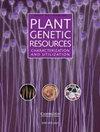季节和基因型对巴拉圭冬青扦插、生根及生物活性物质的影响
IF 0.7
4区 生物学
Q3 PLANT SCIENCES
Plant Genetic Resources: Characterization and Utilization
Pub Date : 2023-08-17
DOI:10.1017/s147926212300059x
引用次数: 0
摘要
马黛茶(巴拉圭冬青)的叶子含有许多已证实具有生物活性的化合物;因此,全球对物种产品的兴趣和消费都在增加。在这里,我们使用了来自种源和后代试验的19种马黛茶基因型,结果可能对物种的无性繁殖和基因型选择具有重要意义,我们指出了一些潜在的基因型,为马黛茶造林和育种计划做出了贡献。研究了季节和基因型对扦插生根的影响、生物活性物质含量及其对生根过程的影响。我们四季准备半木本插枝;100天后,我们评估了生根变量。采用高效液相色谱法测定了砧木成熟叶水提液中甲基黄嘌呤(咖啡因和可可碱)和单咖啡碱奎宁酸的含量。生根变量与评价化合物之间没有相关性。只有8个基因型在至少一个季节的生根插枝中占70%以上。这些基因型和季节之间的生根变量不同。咖啡因和5-咖啡酰奎宁酸(CQA5)对分离的基因型和季节有显著影响。CQA5在春季含量最高。就基因型而言,EC22在所有季节都显示出低水平的咖啡因。基因型间化合物的巨大差异表明了化学特性的育种和不同产品原料生产的可能性。结果还表明季节对马黛茶无性繁殖成功率和叶片化合物含量的影响。本文章由计算机程序翻译,如有差异,请以英文原文为准。
Seasonality and genotype influence on Ilex paraguariensis cuttings rooting and bioactive compounds
Yerba mate (Ilex paraguariensis) leaves have many compounds with proven bioactive activity; so, interest and consumption of species' products have increased globally. Here, we used 19 yerba mate genotypes from a provenance and progeny trial, yielding findings that could have significant implications for the species' vegetative propagation and genotype selection, where we indicate some potential genotypes, contributing to yerba mate silviculture and breeding programmes. We evaluated season and genotype effects on rooting of cuttings, contents of bioactive compounds and the influence of these compounds on rhizogenic process. We prepared semi-woody cuttings in four seasons; after 100 days we evaluated rooting variables. Methylxanthines (caffeine and theobromine) and monocaffeoylquinic acids contents were measured using high performance liquid chromatography, from aqueous extract of stock plant mature leaves. There was no correlation between rooting variables and evaluated compounds. Just eight genotypes presented above 70% of rooted cuttings in at least one season. Rooting variables varied between these genotypes and seasons. Caffeine and 5-caffeoylquinic acid (CQA5) significantly contributed to separated genotypes and seasons. CQA5 showed highest levels in spring. Regarding to genotypes, EC22 showed low levels of caffeine in all seasons. The great variation in compounds among genotypes indicates the possibility of breeding for chemical characteristics and raw material production for different products. Our results also indicate the importance of seasons for yerba mate vegetative propagation success and leaf compound contents.
求助全文
通过发布文献求助,成功后即可免费获取论文全文。
去求助
来源期刊

Plant Genetic Resources: Characterization and Utilization
Agricultural and Biological Sciences-Agronomy and Crop Science
CiteScore
2.80
自引率
0.00%
发文量
29
审稿时长
>12 weeks
期刊介绍:
Plant Genetic Resources is an international journal which provides a forum for describing the application of novel genomic technologies, as well as their integration with established techniques, towards the understanding of the genetic variation captured in both in situ and ex situ collections of crop and non-crop plants; and for the airing of wider issues relevant to plant germplasm conservation and utilisation. We particularly welcome multi-disciplinary approaches that incorporate both a technical and a socio-economic focus. Technical aspects can cover developments in technologies of potential or demonstrated relevance to the analysis of variation and diversity at the phenotypic and genotypic levels.
 求助内容:
求助内容: 应助结果提醒方式:
应助结果提醒方式:


